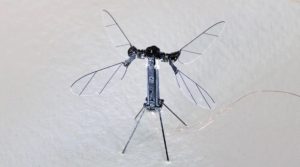In response to Diego Villamarin’s comment:
“… I’m also a Bio person but for all the talks that I’ve had about using animals as model organisms, I never believed we would be able to reach this level of manipulation and control over them!
I guess I’m left wondering what your thoughts are regarding the morality of this kind of tech? I know you are very knowledgable about bugs and this side of Biology. Do you think there are benefits to using these bionic organisms over small drones or fully robotic technology? I can only seem to think that it helps with camouflage and perhaps cost effectiveness, assuming the device on the bug’s back is somewhat cheap to manufacture. I’d love to hear more of your thoughts!”
Hey Diego!
Thank you so much for your question about the morality of insect drones. The video of the struggling beetles getting wired up and twitching under electrical currents also made me question the ethics of this technology. I hate watching animals unnecessarily suffering, but I find sacrificing an insect rather than having a human scout in dangerous situations far out weigh the moral implications.
You nailed it on the head with camouflage as an advantage. Since insects are much smaller you could also work them into much tighter spaces, such as underneath doors or cracks in walls. I think in the future the cost effectiveness would also come into play, but it is going to take a while to get efficient in wiring up these bugs. These microsurgeries surely can’t help with the health of the insects, so I do think turning to insect-mimic robots would be a better option.
At Harvard they’ve designed a solar-powered drone that utilizes wing construction from bees. Three years ago one of the Harvard biomimetic researchers actually came to Bowdoin to give a talk about how they optimize the durability of these wings. They found that bumblebees had a elastic joint in their wing, reducing the damage caused upon bumping into an object and keeping their flight in path. On the other hand, wasp wings without the joint fared much more poorly in the durability test. I have to admit the research methods were a bit savage since they took live insects, strapped them into rotisseries, and spun them so their wings would smash against a surface. I can’t find the study but here’s a link to Harvard’s microbiotics lab (https://www.micro.seas.harvard.edu/)

URLs:
https://www.technologyreview.com/2019/06/26/134377/robot-bee-solar-powered-flying-drones/ (Info + image)
https://www.micro.seas.harvard.edu/ (Info)
